This article is an attempt to clarify the details of the different training aircraft that were developed for the Japanese Navy’s late-war special attacker ‘Ōka’. The designations and purposes of the Ōka trainers are often confused, not only in English but even in Japanese publications. Using a few historical materials, we can correctly identify them and better understand their true details.
Although the focus of this article is on the Ōka trainers, a brief about the Ōka Model 11, the main mass production model, follows.
The Ōka Model 11 was a manned missile for attacking naval vessels developed by the Japanese Navy in August 1944 under the dire situation of the late war period. The project first received the secret designation ‘Maru-Dai’ (A circle or ‘maru’ around the kanji ‘dai’「大」), and although it was atypical to give Navy code-names to suicide aircraft, it was also designated ‘MXY7’ due to being created by the Navy 1st Air Technical Arsenal (Kūgishō). The Navy formal name ‘Ōka’「櫻花」(Cherry Blossom) was granted for service.
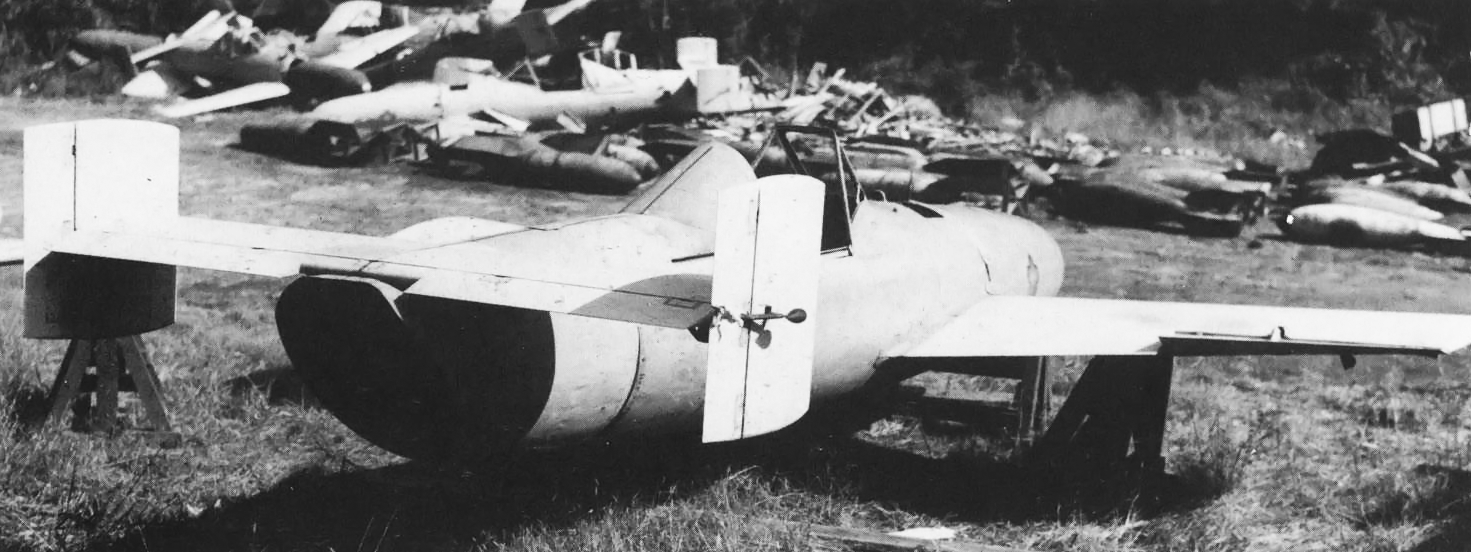
This plane consisted of a tiny 6.06-meter-long by 5.12-meter-wide airframe with mid wings and a twin tail. It was constructed from duralumin, steel, and wood to conserve resources, and was designed to resist speeds up to 1000 km/h. Its sole armament was a 1.2 ton semi armour piercing warhead in the nose delivered by a ramming suicide attack, and the power plant consisted of three Type 4 Mk.1 Rocket providing 800 kg of thrust each with burn times of about 9 seconds, which were contained in the rear of the fuselage.
Ōka Mod.11 could not take off by its own power and was brought up to the target area by a G4M2e attack plane. The pilot had only the basic instruments and controls necessary to arrive at the target, and the operational range was poor: as little as 20 km when dropped from 3500 m. Due to this latter fact, Ōka could not be deployed effectively, and the mother planes were often intercepted before reaching the drop point. Later developments were centered around extending the range of the Ōka by using alternative jet power plants, but the war ended before any could be utilized.
The first examples of the Ōka were manufactured in September 1944, one month after the start of design. 755 examples of the Mod.11 had been constructed overall by March 1945 when mass production was terminated.
MXY7-K1 ー Single Seat Ōka Trainer
Naturally, the training variant of the Ōka was developed at the outset of the project, as unlike conventional aircraft, the manned missile could not take off or land in its operational configuration. This initial training model received the code name ‘MXY7-K1‘, ‘K’ being the Navy code for training aircraft, and ‘1’ denoting that it was the first of this type (a successive two-seat trainer was already planned).
The MXY7-K1 had a few differences from the base aircraft in order to temper its flying characteristics for trainees. The wingspan was extended slightly by 12 centimeters, and the wings were equipped with flaps to decrease the landing speed. Inside the fuselage, which was extended by about 4 centimeters, the warhead & power plant areas were replaced by two water ballast tanks to maintain the proper weight and center of gravity. At the time of landing, these tanks were both dumped by the pilot to reduce weight and further decrease the landing speed. Even with the aforementioned measures, the landing speed was still a rather quick 203 km/h.

As for the means of landing, the MXY7-K1 was equipped with a central landing skid below the nose, similar to the method used with the Shūsui rocket fighter. The wings had a guard extending below each wingtip to stop the underside of the wing’s surface from being damaged as the plane leaned to one side and scraped against the ground after touching down.
The first manned test flight of the Ōka was via an MXY7-K1 and took place on October 31st, 1944, with test pilot Kazutoshi Nagano in control. At the drop altitude of 3,500 meters, the G4M released the trainer. The K1 immediately fell sharply from its mother plane but began to glide as the airspeed increase generated more lift from its small wings. Nagano quickly ignited the twin wing-mounted powder rockets, but due to unequal thrust causing the plane to yaw, he released them from their mounts almost instantly. The rockets, still burning powder, flew ahead of his aircraft while spewing smoke, which attracted alarm from the observers on the ground until the plane continued to fly as normal.
Nagano emptied the water ballasts as intended on the approach to the runway, and made a successful landing in front of the crowd of onlookers. Nagano had mainly praises for the aircraft, giving the opinions that the stability and control authority were perfect, that there were no problems with flight while emptying the ballasts, and that it could be used for training without issue. The wing-mounted rockets, however, did not function correctly due to unequal thrust, and were eventually abandoned.
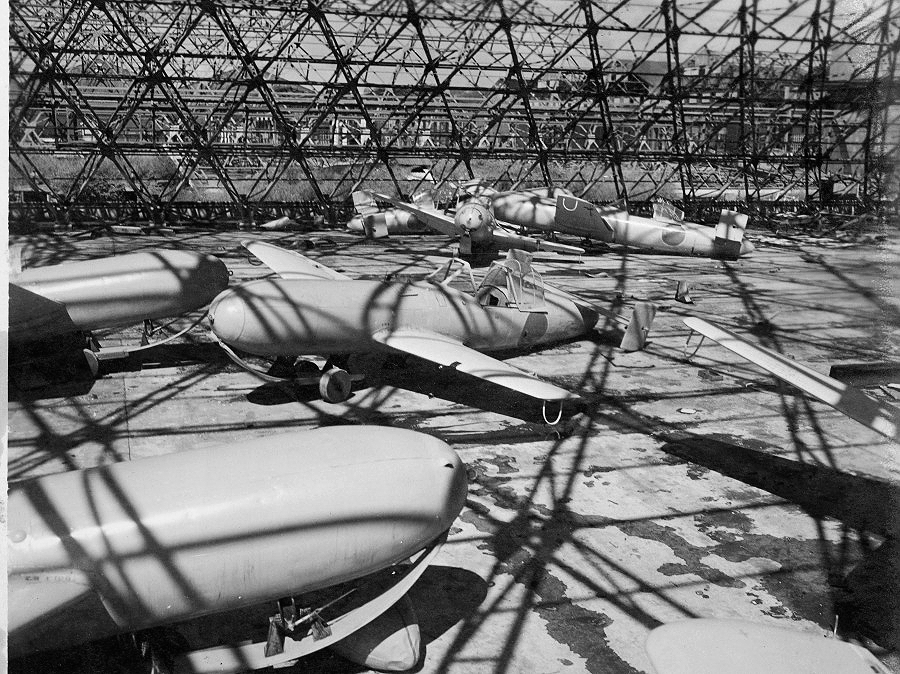
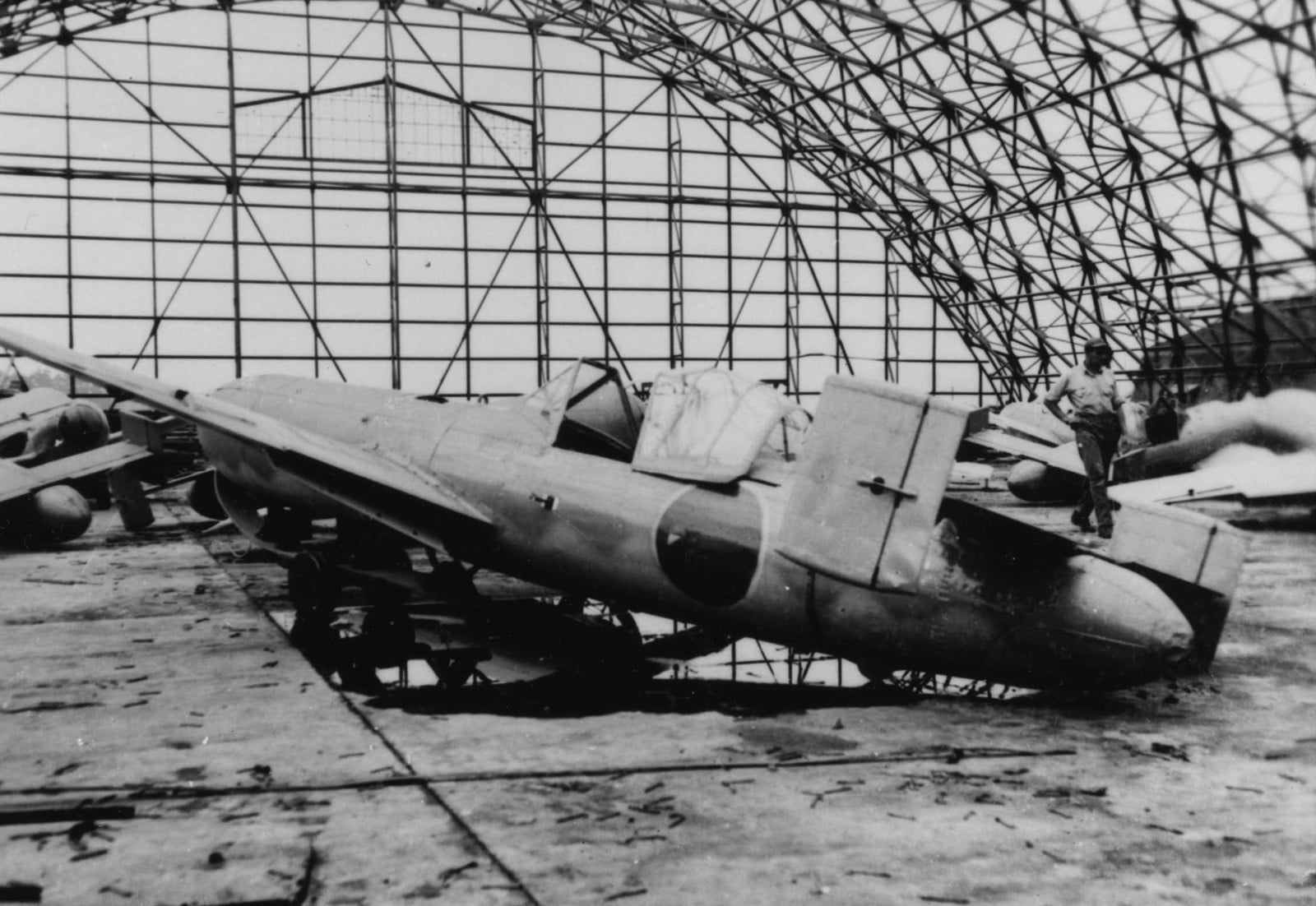
Wing flaps, which were a feature unique to the trainers, are clearly visible in the second photo.
K1 trainers arrived at the 721st Naval Air Group (God Thunder Corps) at Kōnoike Air Base in November 1944, which would later become the first unit to operate the Ōka in combat. Here, the first landing-training test flight was conducted by Lieutenant Tsutomu Kariya on November 13th. The drop altitude this time was 3,000 meters, as the previous drop at 3,500 meters had initially frozen the ballast water. However, when Kariya began to dump the ballasts on his approach, the K1 immediately pitched sharply upwards, stalled, and fell from the sky. He could not recover flight, and crashed into the sand, flipping the K1 trainer end over end.
Lieutenant Kariya was still conscious when recovered from the trainer, but he died just hours later.
It was ascertained that Kariya’s crash was caused by pilot error: the front ballast was emptied before the rear one, the incorrect order, and so the accident occurred. But from this point onward, the water ballasts were no longer loaded during training. It was said that, in the official report, the true cause of the accident was likely the nose ballast leaking into the cockpit and blinding the pilot.
Training with the K1 continued immediately and through to the end of the war, initially for the combat operations of the Ōka Model 11, and later for the expected deployment of the Ōka Model 22 (a development to extend the range by using a motorjet engine). By the end of the war, 86 MXY7-K1 trainers had been produced, and out of the few hundred trainees, two deaths and two injuries occurred.
MXY7-K2 ー Two Seat Interim Trainer?
The two-seat Ōka trainer is far less understood than its single-seat counterpart, and lots of misinformation floats around this aircraft. The names ‘K1 Kai’ and ‘Wakazakura’ are frequently used to designate this plane in English, but its actual name is ‘MXY7-K2‘. This can be verified by the original nameplate on the rear-left of the surviving example, which is under the ownership of the National Air and Space Museum.

MXY7-K2 is almost universally described by secondary sources (English and Japanese alike) as the trainer for the ‘Ōka Model 43 Otsu’. The Model 43 Otsu variant of the Ōka was much larger than the preceding models (8.16 meters long by 9.00 meters span), and operated completely independently by launching from land catapults. Utilizing a single Ne-20 turbojet engine for propulsion, it also had a far superior range. The Ōka Model 43 Otsu was expected to correct the problems with the previous models and become the primary special attacker for the final defense of the Japanese home islands. Coastal catapults were constructed around various expected areas of the US invasion fleet. But the war ended before a single Model 43 Otsu finished construction.
The K2 does exhibit some specific features that would seem to imply that it was developed for this task. The wing span of K2 is ~7 meters, significantly larger than the ~5-meter wings of the Model 11 & K1. It could easily be assumed that this wingspan was chosen to emulate flight characteristics closer to the Model 43, which had a ~9-meter wingspan. Also, it is plausible to speculate that the two-seater layout was chosen for safely instructing trainees with the unfamiliar takeoff method of rocket catapulting. Lastly, it could be equipped with a single Type 4 Rocket in the rear for extending the glide range.
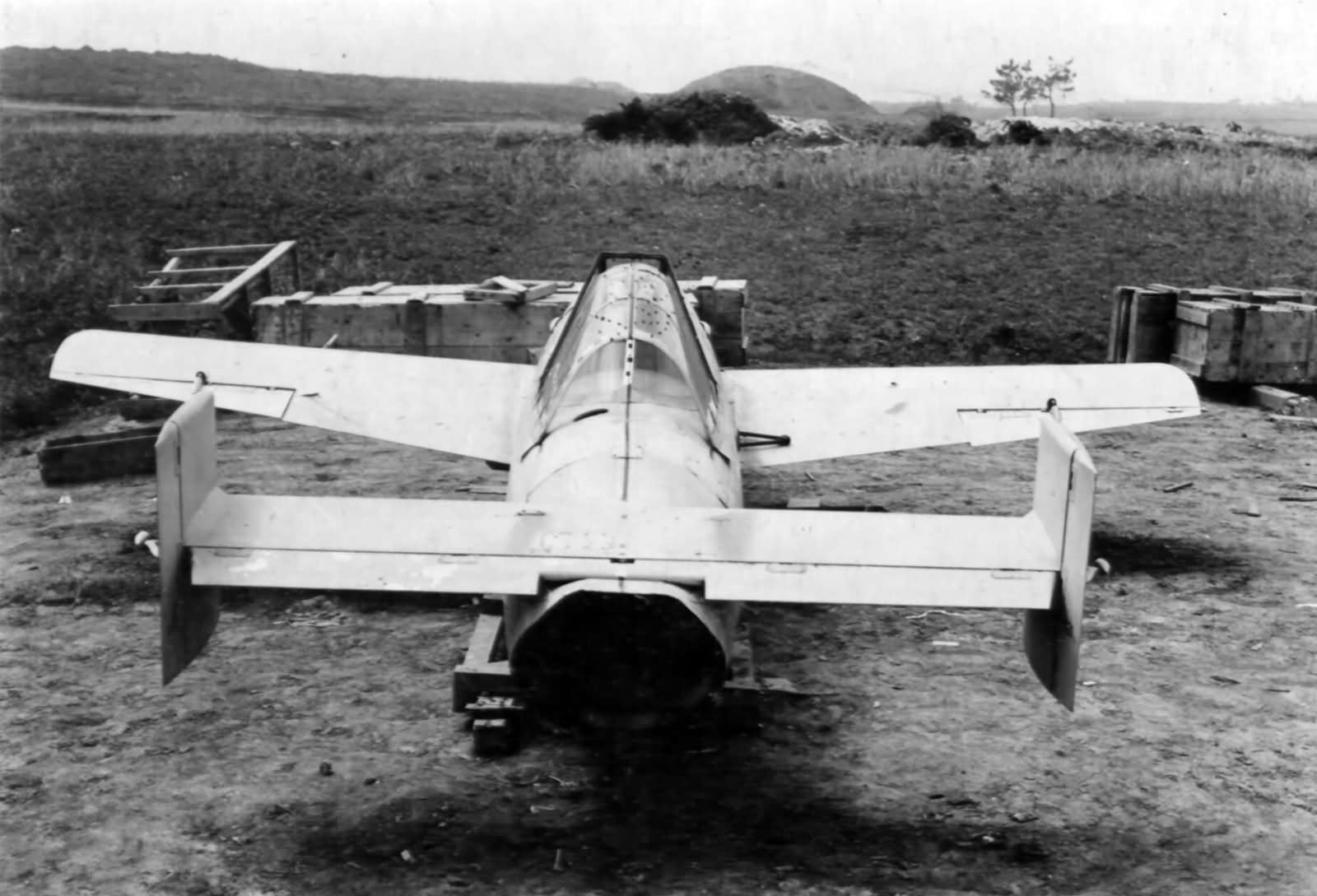

The exhaust venturi at the rear of K2 is partially visible here.
Based on contemporary evidence, however, I would like to present the theory that the MXY7-K2 was only a two-seat trainer for the Ōka Model 11, and was not developed for the Model 43.
To start off, when did the K2 originate? As the development of the Ōka Model 43 Otsu only began in March 1945, this would seem to be an easy point to immediately separate K2 from being a ‘Model 43 Trainer’. While it’s not totally clear from the materials available to me, it is certain that a two-seater Ōka was planned from essentially the very beginning of development:
In September [1944], 9 dummy planes, 1 actual single-seater, 2 two-seaters, and 5 trainers will be manufactured.
Results of a General Staff meeting on August 28th, 1944, quoted in ‘Senshi Sōsho 45’
The precise date of when the K2 was actually completed is yet unknown, but based on this schedule, it appears that the construction of two double-seat Ōka was thought to be imminent just before September. It’s known that initial Ōka prototype constructions proceeded smoothly. This also coincides with the fact that only two examples of K2 are known to have been completed overall.

Before continuing with the historical analysis, there are also physical features of K2’s airframe relevant to this theory. There is clearly a loop for mounting K2 to a mother plane located between its two canopies. Such a feature would be unnecessary on a dedicated trainer for the Model 43, which only launched from catapults. Furthermore, the scale of the K2, though larger than K1, is not consistent with the giant Model 43 – at roughly 6.4 meters long by 7 meters wide, it’s almost 2 meters shorter in length and span. The fuselage in particular is clearly a direct adaption of the Model 11 design.
The point where K2 seems to become related to the Ōka Model 43 is during June 1945. At this time, the design of Model 43 was already completed, and production plans were progressing. Starting on June 27th and lasting two days, the K2 was launched for a series of very successful flights using the rocket catapult for Mod.43 constructed on the shore of Takeyama. The pilot was Commander Hiromitsu Ito, and the observer seat was occupied by Ōka’s chief designer Tadanao Miki.
“How about starting an aerial sight-seeing company with this plane after the war is over!”
-Commander Ito quoted in ‘Thunder Gods’
One fact that seems to be disregarded, however, is that in the recollections of this event, the K2 is described as “a two-seater Model 11 training plane”. This poses another question, though: If the K2 was truly built prior to the design of Model 43 as a ‘Model 11 trainer’, why would it have been designed with the capability to launch from Model 43 catapults, and utilized in these tests?
The answer to this can be derived from the text of a slightly later document, Av HQ Aero Secret No. 5392 from July 24, 1945, which concerns the development of a two-seat trainer for the Ōka Model 43:
In relation to Chiefs of Staff Aero Secret No. 823, conduct testing research after modifying to allow launching from the experimental rocket catapult, evaluate the practical two-seater, and obtain improvement data.
Extract from ‘Av HQ Aero Secret No. 5392’, quoted in ‘Mysterious Ōka Model 43 Otsu Turbojet Special Attacker (First Part)’.
The wording of this document is a bit vague, but it seems to state that the decision to develop a two-seater Mod.43 trainer only occurred in July 1945, after the catapult test of the MXY7-K2. Furthermore, this document concerns modifying a single-seat Ōka Model 43 trainer design to the newly decided twin-seat type, but also seems to state that an aircraft should be modified to allow catapult launching, to ‘evaluate the practical two-seater’. This likely just means to adjust the future Mod.43 trainer for launching as necessary — Regardless, it definitively separates the two-seater Mod.43 trainer as a later aircraft from K2.
In summary, based on the existing evidence from the period, my theory is that ‘MXY7-K2’ was only a prototype two-seat trainer for the Ōka Model 11. Due to the rapid construction of Ōka Mod.43 rocket catapult sites in 1945 before aircraft could be completed, modifications were done to allow K2 to be catapulted from these sites for early evaluations. For this purpose it was ideal due to having two crew. As K2 was not the true Model 43 trainer, mass production did not proceed afterward. At the end of the war, the US recovered the sole two MXY7-K2 trainers at the Kūgishō, of which the most intact example was sent to the US and remains in the ownership of the Smithsonian NASM.


The right image shows K2 next to a Type 4 Heavy Bomber on the carrier USS Core.
Wakazakura ー Ōka Model 43 Otsu Catapult Trainer
*Dec 13, 2023: Information on Wakazakura updated.
Having tentatively concluded that the trainer for the Ōka Model 43 Otsu was not the MXY7-K2, let’s establish what the Mod.43 trainer actually was. In truth, there are almost no materials in my possession to define the Mod.43 trainer with, save for one primary document which coincides with the previous data, and largely is the reason I am confident in this theory. It’s the ‘Navy Prototype Planes Performance Chart’ from August 22, 1945, submitted by the Kūgishō to the US authorities following Japan’s surrender.
At the bottom of this document, a two-seat trainer named ‘Wakazakura’「若櫻」(Young Cherry) is vaguely outlined, which seems likely to be the two-seat trainer of Ōka Model 43 Otsu.


| Name | Experimental Wakazakura |
|---|---|
| Maker | Kūgishō |
| Format | High[wing] – Mono[plane] |
| Crew | 2 |
| Span (m) | 9.000 |
| Length (m) | 9.000 |
| Height (m) | 3.200 |
| Empty Weight (t) | .600 |
| Gross Weight (t) | .750 |
| Engine | Powder Rocket |
| Summary | Training glider for catapulting |
| Progress (Schedule) | Start: 07/1945 | Unit 1: 11/1945 | Finish: 03/1946 |
| Status | Being designed |

The Wakazakura is otherwise briefly described by a few Japanese secondary sources. It was a modification of the Navy glider ‘Chikara’ (Power). The Chikara was designed and first built by Japan Small Airplanes in 1941 as a two-seat trainer for the experimental ‘MXY5’ transport glider developed by the Kūgishō. Two pilots are seated in tandem for the purpose of training to be towed, gliding, and landing. The Chikara was rather large for a glider, with a wingspan of 11.25 meters, and a length of 8.8 meters. The empty weight of the airframe was 326 kilograms, while loaded it weighed 516 kilograms. The structure was made of wood but designed to a high strength for unlimited aerobatic potential. The main wheels for landing were semi-recessed into the fuselage, while a skid was positioned below the nose.
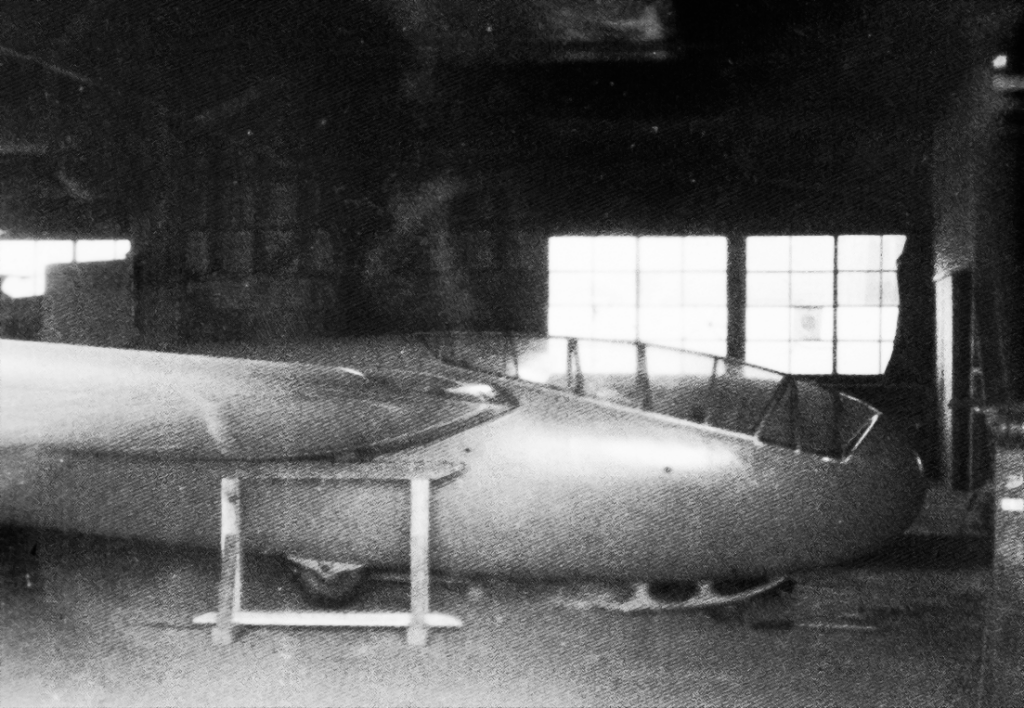
Therefore, if the specifications given in the previously mentioned Kūgishō table are correct, the design of the ‘Wakazakura’ differed in the following manner from the Chikara. The wingspan was reduced from 11.25m to 9.0m, which coincides with the wingspan of the Ōka Model 43 Otsu. The length slightly increased to 9.0 meters, probably due to the installation of rocket(s) (unclear if a single or multiple). Also due to the powder rockets, the empty weight had increased by about 274kg, and the loaded weight by about 234kg.
It is stated in the 88th volume of Senshi Sōsho that the Wakazakura was to be used as an intermediate trainer for not only the Ōka Mod.43, but also the Kikka. This is not clarified by other sources. Regardless, the Wakazakura was also to utilize the same powder rocket catapult system as the K2 and the Ōka Mod.43. The training grounds was to be at the Mt. Hiei catapult site, where the training of the Ōka Mod.43 was being organized.
Rather important for this theory is the design starting date listed as July 1945 in the Kūgishō table, which coincides with the documented decision to create a two-seater Ōka Model 43 trainer, as explained in the previous section. Furthermore, the initial prototype was only expected to be completed by November 1945, which is quite late. Under this situation, it seems apparent why it was necessary to modify the K2 for testing the rocket catapults beforehand.
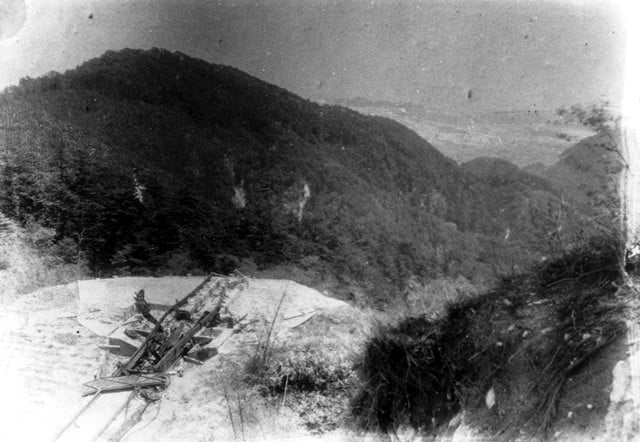
For training the pilots of the Ōka Model 43 Otsu, the 725th Naval Air Group was formed at Shiga on July 1, 1945, to operate from the Mount Hiei catapult site. Just before the end of the war, a wooden model of the Mod.43 Otsu was loaded onto this catapult and launch-tested with rocket propulsion. The necessary adjustments were made to the catapult system, the glider landing zone was constructed, and the pilots waited for the arrival of Wakazakura trainers.
Thankfully, the war reached its conclusion before the deployment of Ōka Model 43 Otsu. Not a single prototype of the actual plane nor its Wakazakura trainer was fully completed by the end of hostilities on August 15th, leaving behind little material evidence for researchers. With such little clarifying data and prominent misinformation, it’s easy to see how the unusual ‘MXY7-K2’ and the scarcely documented ‘Wakazakura’ are typically conflated even to this day.
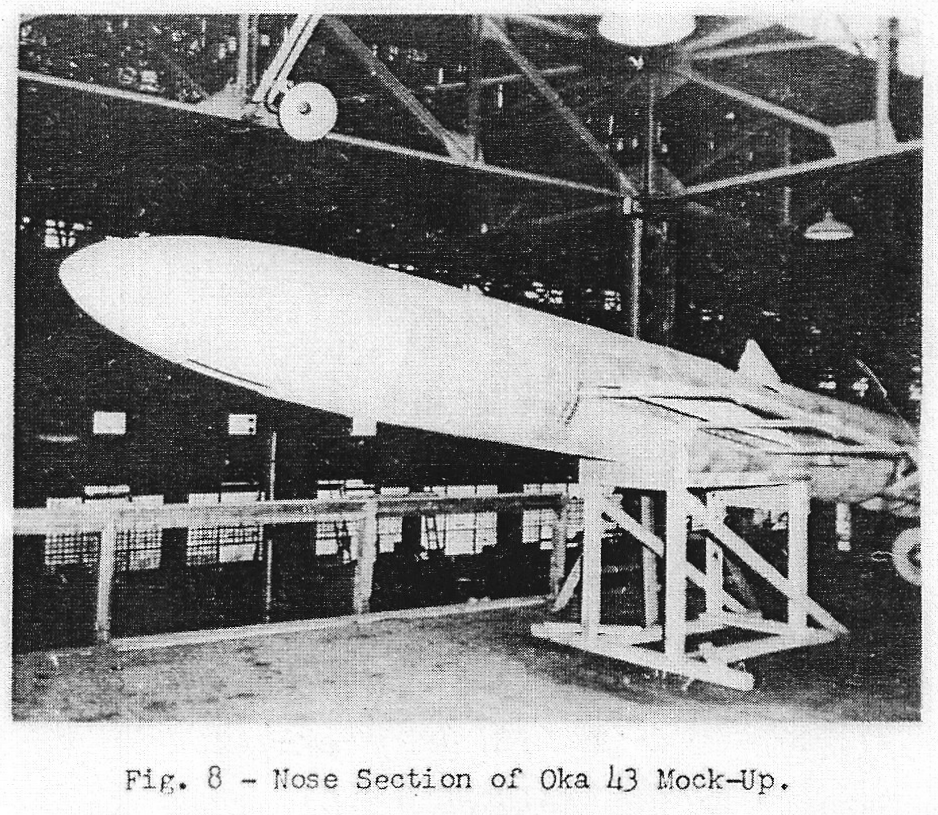
Sources
- Nomura, Minoru. Senshi Sousho 45, Imperial General Headquarters Navy Department/Combined Fleet (6), Third Stage Operations Late Period. Tokyo: Asagumo. 1971.
- Senshi Sousho 88.
- Naito, Hatsuho. Thunder Gods. New York: Kodansha International. 1989.
- Kaigun Kōkū Gijutsu-shō. Tōkyō: Gakken Plus, 2008.
- Tokko Issue 96: Kawamura, Iwao. Mysterious Ouka Model 43 Otsu Turbojet Special Attacker (First Part). 2013.
- Tokko Issue 97: Kawamura, Iwao. Mysterious Ouka Model 43 Otsu Turbojet Special Attacker (Last Part). 2013.
- Katō, Hiroshi. God Thunder Corps Record. Tokyo: Hobby Japan, 2021.
- Rep. Kaigun Shisaku-ki Seinō Yōmoku Ichiranpyō, 1945.
- Rep. Japanese Power Plants For Jet Propulsion. 1946.
- Rep. Desc of Experimental Aircraft and Experimental Engines Under Development by the Japanese Army and the Imperial Japanese Navy. 1946.
- Rep. Full Picture of Navy Military and War Preparations Part 6 (War Preparations and Special Attack Preparations on Defeat). 1952.
*December 13th 2023: Corrected information about Wakazakura